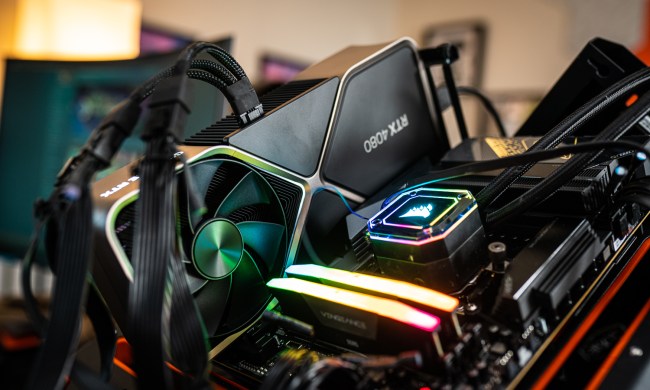Nvidia might be at the heart of your next gaming PC, not just through a graphics card, but also through your processor. Team Green is working on an Arm-based PC platform that’s built around a CPU and GPU designed by Nvidia and that is reportedly set to launch in September 2025, according to DigiTimes.
According to the report, Nvidia is planning on launching a high-end computing platform based on Arm instructions in September, with a commercial launch following in March 2026. This is the first we’re hearing about a timeline for Arm-based chips designed by Nvidia, but it’s not the first time we’re hearing about it. About a year ago, Reuters reported that Nvidia began looking into Arm-based CPUs as “part of Microsoft’s effort to help chip companies build Arm-based processors for Windows PCs.”
In 2024, we now know what exactly the report was talking about, with Microsoft’s big push of Arm-based Copilot+ laptops. It seems Nvidia is aiming higher than what we’ve seen with Copilot+, however, and likely targeting a premium tier of users who are interested in gaming. If this report is accurate, it shines new light on Nvidia’s failed attempt to purchase Arm last year.
There’s some strong evidence that the report is accurate, too. Earlier this year, Nvidia CEO Jensen Huang came just short of confirming that the company is working on a consumer Arm-based processor in an interview with Dell CEO Michael Dell. In the enterprise arena, Nvidia already has plenty of experience designing Arm-based CPUs. The company’s Grace CPU is a core part of its Grace Hopper platform, which has played a major role in data centers.
The timing makes sense, too. As it stands now, Qualcomm has an exclusivity deal with Microsoft for producing Arm-based chips for Windows PCs. Arm and Qualcomm have been at each other’s throats for multiple years now concerning a licensing dispute, so Arm is probably eager to get other brands in on producing chips for consumers using its designs. According to Arm, it expects the exclusivity to end this year, opening the door for companies like AMD, Nvidia, and Intel to produce Arm-based chips in 2025.
Nvidia has danced around the idea of producing Arm-based CPUs for Windows PCs for a few years now, but it might finally be taking shape. The company has been on a tear through the data center lately, becoming one of the richest corporations in the world due to its AI accelerators. Now, it seems to be eyeing the consumer market.





